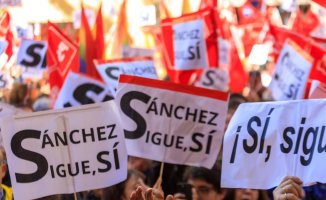The results of the PISA 2022 educational quality assessment prepared by the OECD (Organization for Economic Cooperation and Development) will be announced today. The expectation, which is usually high in the education sector, this time is much greater due to the introduction of a disruptive variable that breaks with the historical trends of these reports: the impact that school closures had during the pandemic.
The Program for International Student Assessment (PISA, for its acronym in English) measures the level of learning in reading, mathematics and science of 15-year-olds in 90 countries since the year 2000. In total, by 2022, 3 million students have passed the test. It is published every three years with the exception of this edition, in which, due to the pandemic, it has been delayed by a year. The current PISA is significant because it will measure the educational setback caused by the lack of attendance, as well as the ability of educational systems to recover. All this results in the educational gap that can open between different geographical areas, different countries, as well as internally, within the same country.
A widespread and global decline from pre-2020 levels is to be expected, but what analysts want to know with this extensive assessment is what the real impact has been in different countries and whether education administrations have been able to recover some of what was lost lose.
International studies ensure that the more confinement, and the less time spent at school, the greater the loss of learning. In this sense, Spain starts with an advantage, since it was one of the countries in the world where educational centers were closed for the least amount of time. Apart from a few exceptions, in which classrooms opened in May-June, students were out of school for half the year, from March to September 2020. With the new academic year 2020-2021, face-to-face schooling resumed, still than with restrictive measures to avoid contagion.
Other governments decided to keep schools closed longer. It was not verified until a year later that the infectious capacity for coronavirus in minors was lower than that of adults, and also the impact on their health.
The variability of closures is very high. Latin American and Caribbean countries kept schools closed for between a year and a half and two years, in a continent where it was difficult to maintain distance education continuity, since only 50% of the population had devices or an internet connection.
Digital environments are precisely another of the elements considered key by analysts to guarantee the continuity of distance education. Communities that had tablets, computers or mobile phones, access to Wi-Fi and their teachers and students were familiar with digital resources lost fewer studies compared to others with worse conditions. In this sense, the European Commission activated emergency funds to provide all students with mobile devices. But having funding wasn't everything. The biggest difficulty for the autonomous governments was the lack of availability of the productive industry (some autonomous communities already had digital environments and their students with tablets). In general, students with higher incomes had devices, unlike the most vulnerable. These students were given their own computers by the schools and were the first to receive devices from the administrations.
The more academic loss, the more recovery effort. Therefore, the PISA 2022 results also count the administration's strategies for moving forward (curriculum reduction, reinforcement classes, and measures to repair the mental and emotional health of minors, essential to guarantee learning). The PISA results will show the difference between Asian countries, whose families invest much more time and money in improving results, and the rest of the education systems.
In Spain, moreover, in this period there was a profound educational transformation. The education law (Lomloe) and the reform of curricula with learning by skills were approved.













